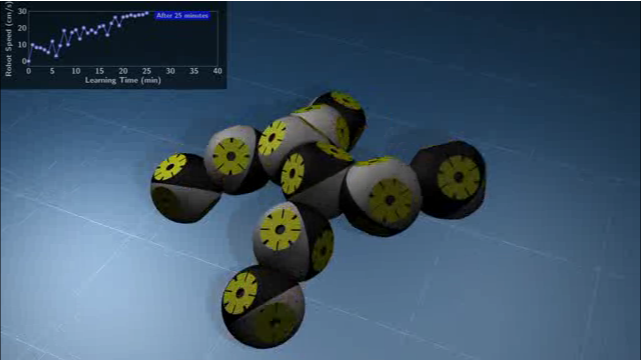New Scientist
Image: EPFL
Think that shape-shifting robots, or ones that march on no matter how many limbs they lose, are just for Terminator films? Think again. A team of European roboticists have developed software that allows a modular robot to adapt when one part stops working.
David Johan Christensen at the University of Southern Denmark in Odense, working with Alexander Spröwitz and Auke Ijspeert at the Swiss Federal Institute of Technology in Lausanne, simulated a quadruped robot constructed from a dozen Roombots – identical rounded robots that have been developed in Lausanne and which can combine to form a variety of modular shapes (see picture).
In the simulation, each Roombot alters its pattern of movement randomly every few seconds and assesses how those changes affect the quadruped’s overall velocity. After being given 10 minutes to find its feet, the quadruped had increased its speed from 5 centimetres per second to 31 cm/s.
When one Roombot was then made to malfunction – instantly slashing the walking speed to 15 cm/s – the quadruped learned to adapt its gait. After a further 20 minutes the hobbled robot had increased its walking speed to 21 cm/s. Read more on newscientist.com…








